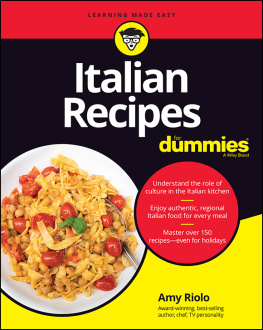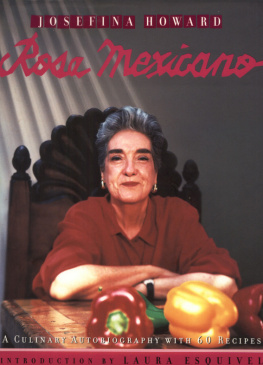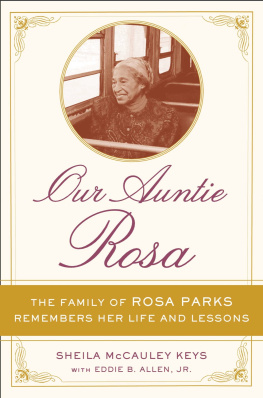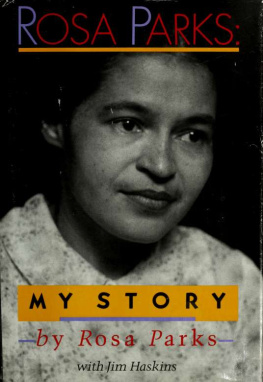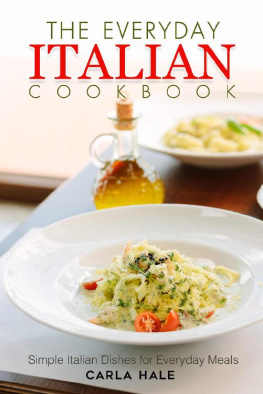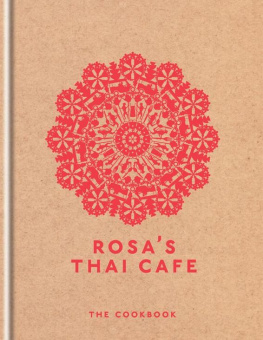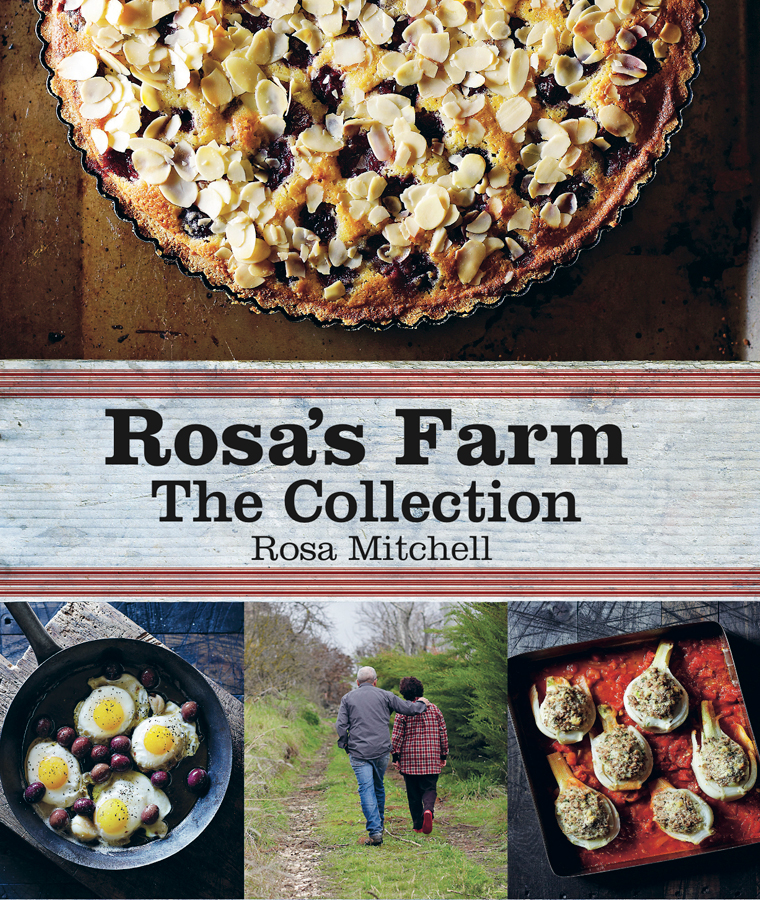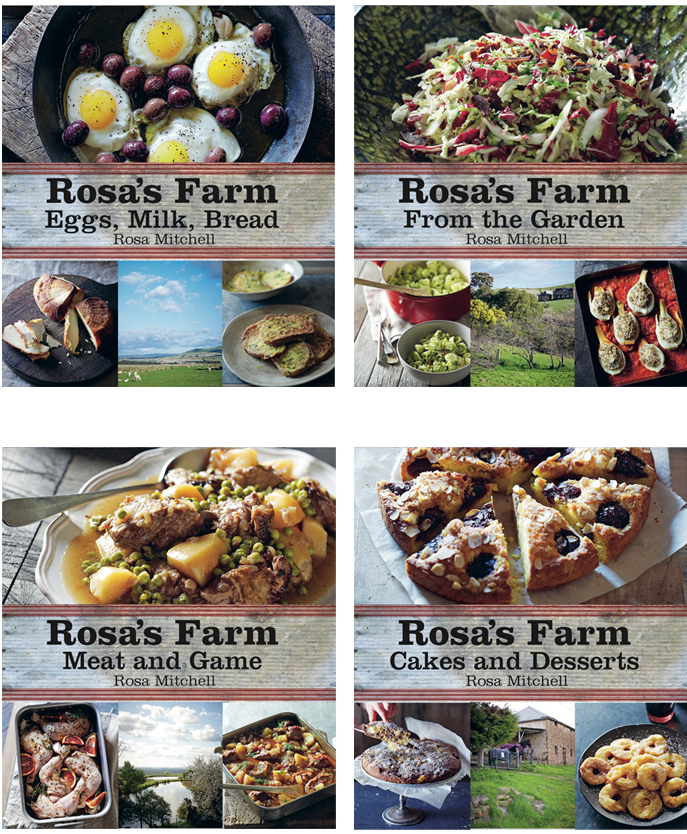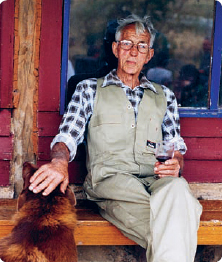
This book is dedicated to
Vincent Gervasoni
8th June 1921 14th August 2005
Acknowledgements
I would like to thank all the people who helped make this book. A special thanks to my daughter Francesca who typed up the manuscript for me and my husband Colin for his support and understanding. Thanks also to my cooking assistant Mark Hockenhull, designer Hugh Ford for all his work putting the book together, Mark Roper for his beautiful photography and my son, Clark Mitchell, for his input.
Contents
Introduction
In a landscape dominated by undulating hills and valleys of green bushland laced with running creeks lies the settlement of Yandoit, twenty kilometers north-west of the rural town of Daylesford in Victoria. In 1854, gold was discovered in the nearby Nuggety Gully, which opened the area up to a rush of gold diggers, who in addition to mining, started farming the land, establishing a small community that thrived during the 1860s, only to dwindle once the rush for gold subsided. Even from its earliest beginnings it had a reputation as an Italian enclave the Gervasoni family being instrumental in creating much of the character surrounding the old stone houses, barns, wells and mines, which even today sparks much interest from historical groups and the National Trusts of Australia.
Of course, in the late eighties, I had never heard of Yandoit. I had been married for a little over ten years and had two small children, Francesca, aged seven and Clark, five. At this stage of my life I was working as a hairdresser in Melbourne. My husband Colin and I had somehow managed to pay off a small inner suburban home and had started thinking of purchasing a weekender out of the city. In my dreams, this was to be a coastal retreat by the sea where I could relax and enjoy the salty air. Colin, on the other hand, had grown up with a family beach house and thought the idea was terribly boring. He was envisioning a place in the country where he could grow grapes, make wine and get his hands dirty. After many discussions we decided on a compromise. We would look in a central Victoria for a comfortable house with a small plot of land that would not be too overwhelming for us to maintain or become a rod for our backs we were both committed to jobs in the city and the kids had settled into school. We searched for months, but anything we both liked we couldnt afford.
Then, one day Colin came home with an old magazine hed found in a secondhand shop. It was filled with pictures of beautiful old stone houses situated on rolling green hills and surrounded by orchards and vineyards. It turned out it wasnt far from where we had been looking for real estate. The article mentioned the name of a man who owned several of the buildings. We immediately resolved to find his telephone number it was a stretch, but perhaps he would like to show us around and maybe even alert us to something that was for sale in the area.
The man was Vincent Gervasoni and unbeknownst to us, he had quite a reputation. I phoned from a nearby town and can remember coming out of the phone box and saying to Colin what an odd conversation it had been, but Vincent had muttered If you can be here in ten minutes, Ill see you. As we approached his house we saw large signs on the outbuilding National Trust, Italian Historical Society and Tourists NOT WELCOME.

At the top of the driveway waited a tall slim man in his sixties, dressed in overalls, with hands the size of frying pans. He introduced himself as Vince and invited us to enter his home. Despite his wary attitude to strangers, we instantly hit it off. Within minutes, Vince had me attempting to translate an old letter that his relatives had brought over from Italy, while at the same time giving Colin a tour of his museum of original farming implements that had survived over the generations together we made a good game of guessing what each of the original tools was designed for. As we walked around his property, Vince told many stories of the old days, about his life growing up in the area and the rich Italian heritage that was at the heart of life on the farm (his family heralding from the north of Italy near the Swiss border). Afterwards, we all warmly shook hands and Vince gave me a hug (he was always partial to a hug). As we strolled down the drive towards the car, Vince reverted to his gruff, defensive persona and said, What did you come here for anyway?
I replied that we were looking for something to purchase in the area. Firmly he told us that the area was locked up, implying that nothing ever comes up for sale at Yandoit Creek, but to leave our number just in case.
Colin and I couldnt stop talking all the way home. We felt we had met someone special and discovered a place that was different and wonderfully secretive. Two days later there was a short message on our answering machine: Its Vince Gervasoni. Ive spoken to the woman on the corner. Shell sell.
Excitedly, I drove up to complete the purchase, not really knowing what I was buying. By the end of the day we were the proud owners of twenty acres of cleared land running up a volcanic hill, a few fruit trees and a dilapidated one-room milking shed. It was almost the exact opposite of my original coastal fantasy, but I loved it. Within weeks the old milking shed was liveable, Colin had planted grapevines, Francesca was enthusiastically embracing nature and Vince had taught Clark to stand at the side of the road, shake his fist and shout bloody tourists at every passing car.
We spent every weekend and holiday at the farm, renovating the shed, planting fruit and olive trees and extending the vineyard by adding five acres of grape vines, including cabernet, cabernet franc and the Italian varietals nebbiolo and arneis, which we started selling to the public in 1994. Vinces family had planted vines on the property in the 1860s, which were productive until he cut them down with his tractor to use the land for grazing. After he saw the successes we were having with our grapes he wanted us to resurrect his shiraz vines. Obviously, when these vines were first planted they were grown without irrigation, which fitted with our philosophy of viticulture (this practice is not common in vineyards today and generally not economically viable). We resolved to rise to the challenge.
Even though our living quarters were quite small, we still managed to entertain and have lots of friends stopping by to visit. We would catch yabbies from the dam, make bullboars (traditional Italian sausages) and buy fresh raspberries from the local berry farm to create lovely meals to share. The pizza oven proved to be an important asset, especially when we needed to feed large groups at harvesting time. We would make tasty pizzas, lasagnas and roasts, sometimes feeding up to sixty people! When my mother came up to visit she would stop off and buy fresh local milk to use to make ricotta and other cheeses in the traditional way. It was during this period that my passion for food and cooking began to shine through.


